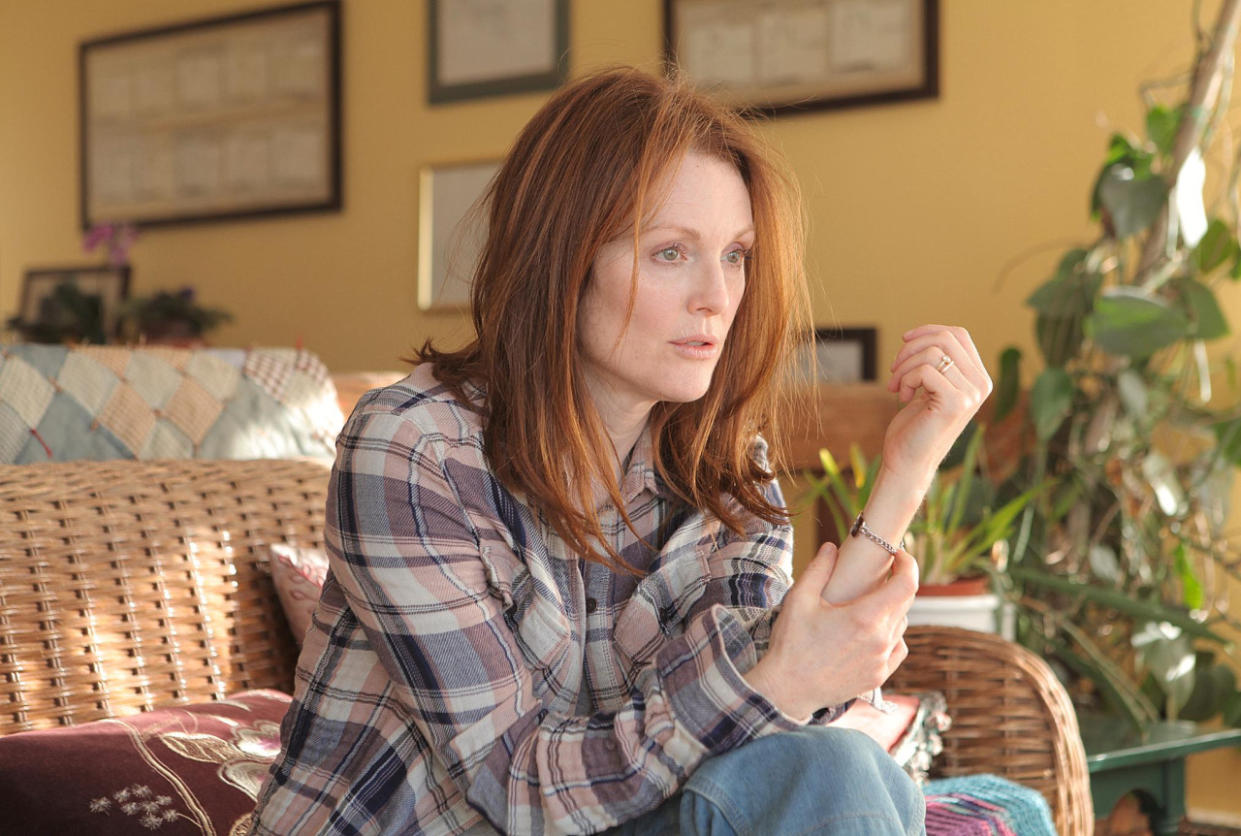The 'Still Alice' Directors's Real-Life Battle With Debilitating Illness

Julianne Moore in Still Alice
You’ve probably heard some of the Oscar buzz surrounding Still Alice, the upcoming drama starring Julianne Moore as a college professor with early onset Alzheimer’s disease and Kristen Stewart as her daughter. The film — in select theaters Dec. 5, then wider on Jan. 16 — is based on the bestselling 2007 novel of the same name, written by Lisa Genova in an effort to better understand her grandmother’s struggle with Alzheimer’s.
But if Still Alice presents an unusually vivid portrait of a family living with disease, that’s because its married directors, Wash Westmoreland and Richard Glatzer, know that pain firsthand. A recent New York Times profile explains that Glatzer was diagnosed with A.L.S. (also known as Lou Gehrig’s disease) shortly before he and his husband decided to make this film. “Though A.L.S. and Alzheimer’s are very different diseases, it was a very hard read for me,” Glatzer said of the novel. “It hit way too close. But when I finished reading, I knew we had to do it.”

Richard Glatzer and Wash Westmoreland at a recent screening
Related: Watch Julianne Moore and Kristen Stewart in the First Clip for ‘Still Alice’
The filmmakers have been a couple since 1995, and began writing and directing films together in 2001. Julianne Moore — who rejected a role in the duo’s previous film, this year’s The Last of Robin Hood — says that Glatzer’s disease was part of the reason that the script for Still Alice resonated so strongly with her. “It infuses it with a real sense of urgency… I feel like he distilled everything he was going through,” she told the Times.
As directors, Glatzer and Westmoreland are uniquely challenged by Glatzer’s symptoms. Having lost his speech, he communicated during Still Alice by typing into an iPad and having it speak the words. More recently, he lost the ability to use his hands, and now types with his foot. “It all wove together with the movie in this way that was so complicated,” Westmoreland said. “This is what the film is about: a never-lay-down-and-give-in attitude.”
Photo credit: Photo by Frederick M. Brown/Getty Images

